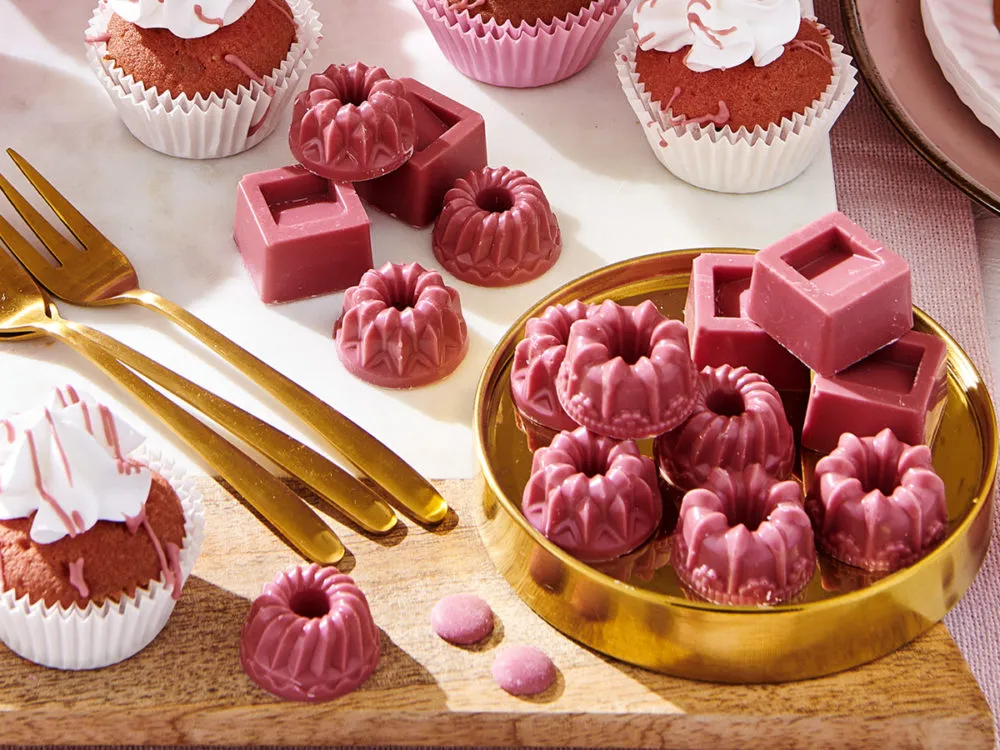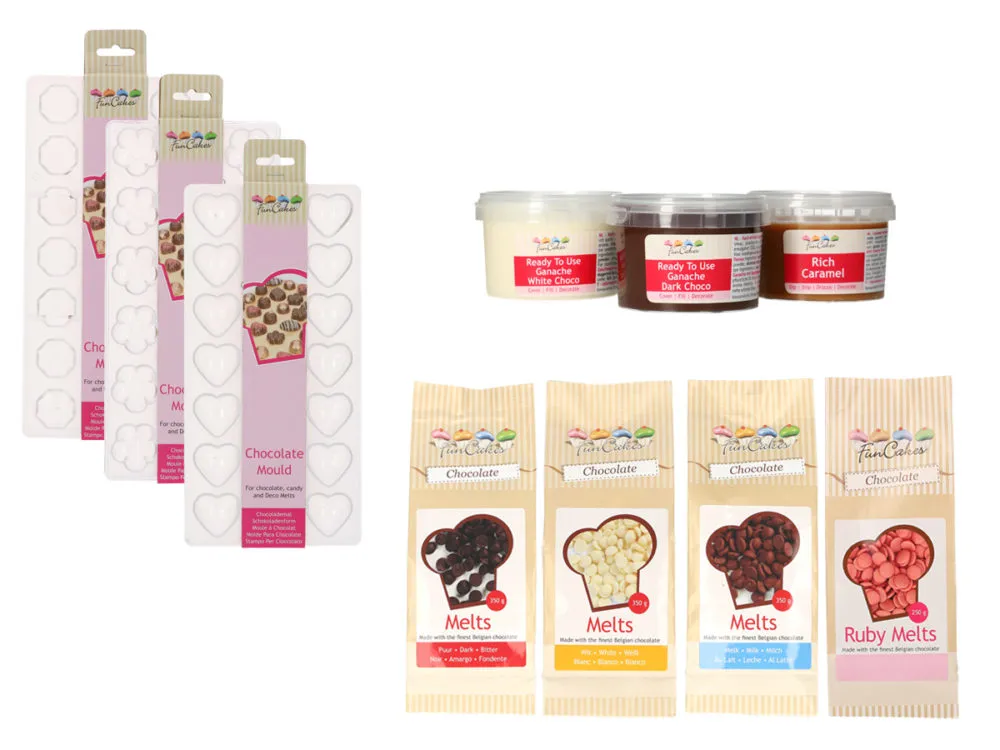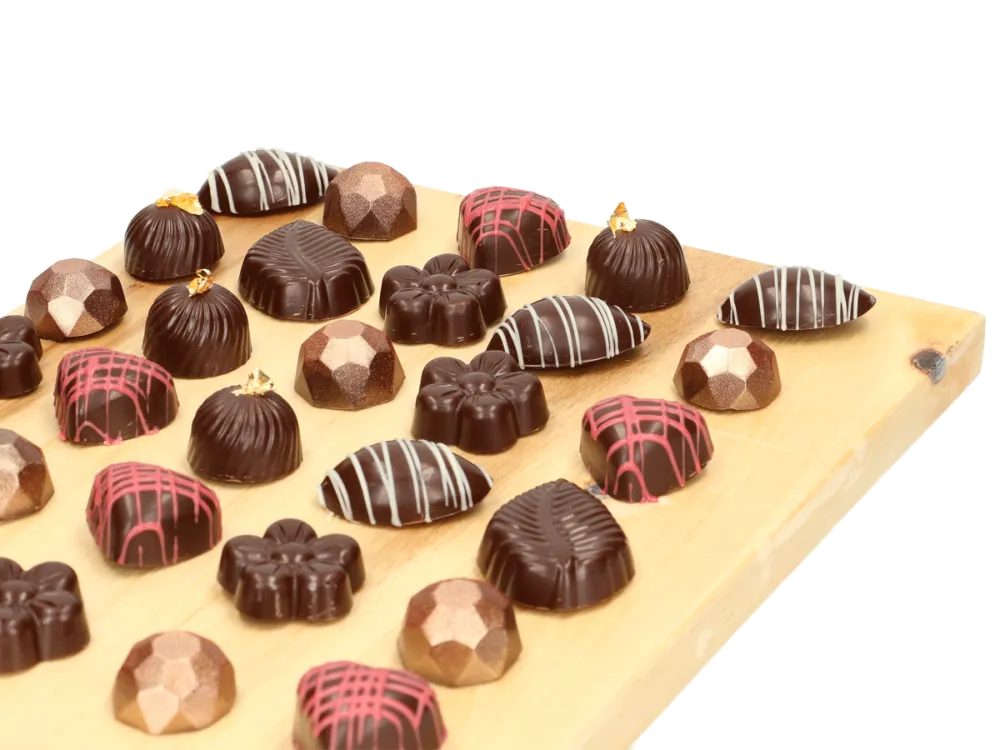All about tempering chocolate
Could we have a moment for chocolate? A starring role for this versatile baking ingredient? The spotlight on our greatest addiction? Collect all choco lovers! It’s time for some serious choco talk.

Chocolate cakes, brownies, bonbons, ganaches… those who love to bake cannot ignore the fact that chocolate is everywhere. And when you go further than adding cacao to your recipes, you know that working with chocolate can get a bit tricky sometimes. It seems like a lot of fun, making your own chocolates. And don’t get us wrong, it is. But just a matter of melting chocolate and pouring it into a mould? Unfortunately, it’s not that simple.
The code word? Tempering. Teach yourself this trick and your bonbons, chocolate decorations and chocolate truffles will steal the show. Don’t feel like it? Then you’ll end up with dusty chocolate that looks like it’s been in your kitchen counter for ages. It may still be safe to eat, but hey, don’t we want our chocolate to look as good as it tasts? Yes, we do.
It seems obvious that chocolate has a nice shine and cracks so nicely when you break it. After all, that is part of chocolate. But if chocolate is not treated correctly during the melting process, you will see that it loses those properties. Dull chocolate that does not harden nicely is the result.
So temper that chocolate! Tempering ensures that you restore the cocoa and sugar crystals in the chocolate after they have broken during melting. By melting chocolate, you actually change the properties of the chocolate, but by tempering it, you restore it.

There are two ways to temper chocolate, but in both cases it means melting your chocolate, then returning it to a lower temperature. You may have seen chocolatiers pour melted chocolate over a marble surface. This is one way of tempering which we call tabling. The chocolate is then melted first, after which two-thirds of the melted chocolate is brought to a lower temperature on the marble surface. When it has cooled sufficiently and is poured back into the remaining melted chocolate, the chocolate reaches a perfect temperature and the cocoa and sugar crystals recover.
Since most home bakers do not have a marble plate, fortunately there is also another way to temper chocolate, called the seeding method. To do this, melt two-thirds of your chocolate au bain-marie (as always, make sure that the water and the bowl of chocolate don’t touch!). When your chocolate is completely melted, remove your bowl from the pan of water and add the remaining chocolate. This causes the temperature of the chocolate to drop again. Keep stirring until all your pieces of chocolate have melted into the hot chocolate. Then grab your thermometer and make sure that the temperature remains between 31°C and 32°C degrees for dark chocolate, or 31°C for milk chocolate and 29°C for white chocolate.
If you now fill a piping bag with the melted chocolate and use it to make chocolate bonbons or decorations, you are sure of beautiful shiny, crunchy chocolate. Chocolate as it should be.
Let’s get to work choco lovers!

Do you want to get started with chocolate yourself? Then take a look at our Chocolate Melts. These chocolate pieces are especially suitable for easy melting and are available in dark, milk, white and ruby! Made from real Belgian chocolate. Cause when you invest time and energy in tempering chocolate, you wanna make sure you only use the best chocolate there is.
Use our new chocolate moulds to make bonbons and fill it with the Ready To Use Ganache or some buttercream and a thin layer of caramel.

